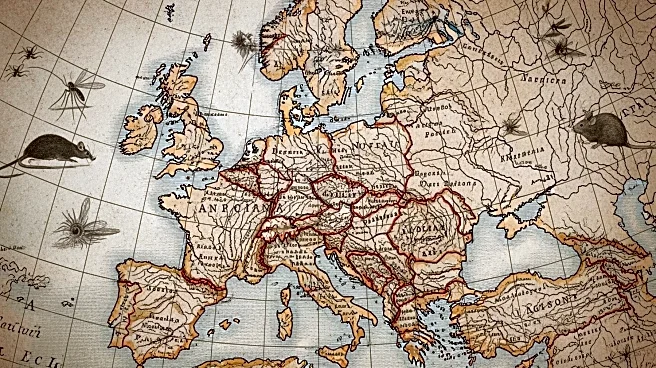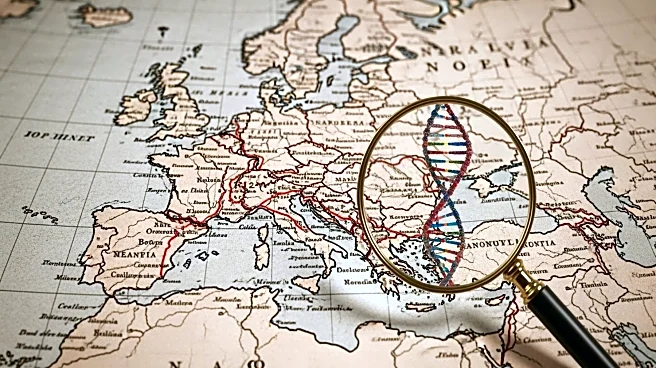What's Happening?
A recent study has shed light on the factors contributing to the massive loss of Napoleon's forces during their retreat from Russia in 1812. Researchers have used modern metagenomics technology to analyze ancient DNA from the remains of soldiers found
in mass graves in Vilnius, Lithuania. The study identified pathogens such as Salmonella enterica, causing paratyphoid fever, and Borrelia recurrentis, responsible for louse-borne relapsing fever, as significant contributors to the soldiers' demise. These diseases, coupled with extreme cold and fatigue, weakened the troops, leading to their downfall. The research highlights the absence of Rickettsia prowazekii, the bacterium responsible for typhus, although historical accounts suggest typhus symptoms were present.
Why It's Important?
The findings provide a deeper understanding of historical military losses and the impact of environmental and biological factors on large-scale troop movements. This research not only revises historical narratives but also underscores the importance of disease management in military strategy. The study's use of advanced DNA analysis techniques demonstrates the potential for modern science to unravel historical mysteries, offering insights into how similar conditions could affect contemporary military operations. Understanding the interplay between disease and environmental stressors can inform current public health and military preparedness strategies.
What's Next?
Further analysis of more samples from the mass graves could provide a comprehensive picture of the epidemic diseases affecting Napoleon's army. This could lead to a reevaluation of historical accounts and contribute to academic discussions on military history and epidemiology. Researchers may also explore the implications of these findings for modern military and public health strategies, particularly in managing disease outbreaks in extreme conditions.
Beyond the Headlines
The study raises ethical considerations regarding the treatment of historical remains and the narratives constructed around them. It also highlights the cultural significance of revisiting historical events with new scientific tools, potentially altering long-held beliefs and myths. The research may inspire similar studies in other historical contexts, promoting a broader understanding of the role of disease in shaping human history.













